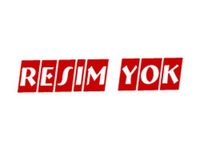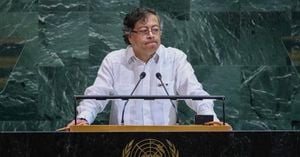On September 21, 2025, Moody’s Investors Service delivered a rare bit of good economic news for Rwanda, upgrading the country’s economic outlook and citing reduced risks from the ongoing conflict in the Democratic Republic of the Congo (DRC). The move, announced in a statement by Moody’s, comes after months of tense diplomacy, intermittent violence, and fragile ceasefires in the region. It’s a development that signals cautious optimism for investors, Rwandans, and international observers alike, but the situation on the ground remains fraught with complexity and peril.
Moody’s decision to upgrade Rwanda’s outlook is rooted in several recent developments, most notably the peace agreement signed between Rwanda and the DRC in June 2025. According to Moody’s, “External financial assistance for Rwanda has remained strong over the past few months and will likely continue to support its credit profile.” The ratings agency went on to affirm Rwanda’s long-term local and foreign currency rating at “B2,” a level that reflects both the country’s economic potential and its persistent challenges.
But what’s behind this newfound optimism? The peace agreement, which was facilitated by the United States and backed by a coalition of international and regional partners, marked a significant step forward for two countries whose relationship has been marred by suspicion and proxy conflict for decades. As reported by Citizen TV and confirmed by the U.S. State Department, Rwanda and the DRC have also agreed on an outline for a regional economic integration framework. This ambitious plan includes cooperation on energy, infrastructure, mineral supply chains, national parks, and public health—areas that could, in theory, transform the region’s prospects if the current détente holds.
Moody’s highlighted several factors that have contributed to Rwanda’s improved credit standing. The agency cited Rwanda’s strong economic growth, its low risk of liquidity issues thanks to a carefully managed debt structure, and robust support from development partners. “Rwanda’s institutions and governance are also stronger than other similar countries, adding resilience to its credit portfolio,” Moody’s noted. For a nation that has often been seen as punching above its weight in terms of development and governance, this is a significant endorsement.
Yet, even as international financial institutions signal confidence in Rwanda’s trajectory, the reality on the ground in eastern Congo is a stark reminder of the region’s volatility. On the very same day as Moody’s announcement, the Armed Forces of the Democratic Republic of Congo (FARDC) launched airstrikes on M23 rebel positions in the volatile North Kivu province. According to Radio Okapi, the UN-backed radio station, the strikes targeted villages including Mukwengwa, Bibwe, Nyarushamba, Nyenge, and Hembe in Masisi, as well as Peti in Walikale territory. These airstrikes followed two days of intense clashes between rebels and the pro-government Wazalendo militia.
The aftermath was grim. Several sources confirmed to UN radio that rebels carried out brutal reprisals in Mukwengwa and Nyabikeri villages, resulting in multiple deaths and the burning of homes. It’s a tragic pattern that has defined eastern Congo for decades: cycles of violence, retaliation, and civilian suffering. Despite the high-level agreements and diplomatic breakthroughs, the guns have not been silenced.
The M23 rebel group, which the DRC government has long accused Rwanda of supporting, remains a key player in this bloody drama. The group resurfaced in 2021 and, according to Anadolu Agency, has since seized and held significant territory—including the provincial capitals of Goma and Bukavu earlier this year. These gains have been a source of international alarm, with many fearing a return to the large-scale conflict that devastated the region in previous decades.
Efforts to halt the violence have been ongoing. In July 2025, the DRC government and a coalition of rebel groups, including M23 (now operating under the banner AFC/M23), signed a ceasefire deal in Doha, Qatar. The agreement, dubbed the Declaration of Principles, was hailed as a potential turning point. However, as recent events demonstrate, fighting has continued, with both sides accusing each other of violating the ceasefire.
Eastern Congo’s troubles are nothing new. The region has been plagued by armed conflict for decades, with a dizzying array of militias, rebel groups, and foreign interests vying for control of its mineral-rich land. The resurgence of M23 and the ongoing violence have complicated efforts to stabilize the Great Lakes region, even as international actors push for diplomatic solutions.
Against this backdrop, the regional economic integration framework agreed upon by Rwanda and the DRC stands out as a bold, if aspirational, vision. According to the U.S. State Department, the framework covers cooperation on energy, infrastructure, mineral supply chains, national parks, and public health. If implemented, it could lay the groundwork for a new era of prosperity and peace. But as recent fighting shows, the path ahead is anything but straightforward.
Moody’s, for its part, remains cautiously optimistic. The agency’s affirmation of Rwanda’s “B2” rating and its praise for the country’s governance and institutional strength are not given lightly. Rwanda’s ability to attract external financial assistance and maintain economic growth in the face of regional instability is impressive. Yet, the ongoing violence just across the border is a sobering reminder that progress is fragile and can be undone in a flash.
For Rwanda, the stakes are high. The country has built a reputation for stability and rapid development since the horrors of the 1994 genocide, positioning itself as a model for others in the region. Its leaders have invested heavily in infrastructure, technology, and education, and have courted foreign investment with some success. But the shadow of conflict in neighboring Congo, and the accusations of meddling that have accompanied it, threaten to undermine these gains.
For the people of eastern Congo, the headlines about credit ratings and economic frameworks must seem distant indeed. The reality is one of fear, displacement, and uncertainty. As long as armed groups like M23 continue to operate with impunity, and as long as ceasefires remain fragile, the prospect of lasting peace will remain elusive.
Still, the events of recent months offer a glimmer of hope. The peace agreement, the commitment to regional cooperation, and the vote of confidence from Moody’s suggest that change is possible. Whether these developments will translate into real improvements for ordinary people on both sides of the border remains to be seen. For now, the region holds its breath, hoping that this time, the promise of peace and prosperity will not be snatched away by the familiar specter of violence.




